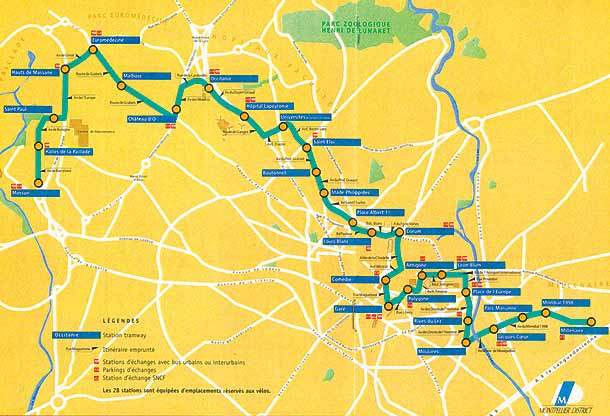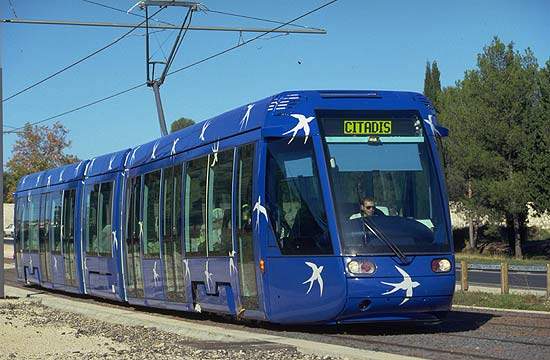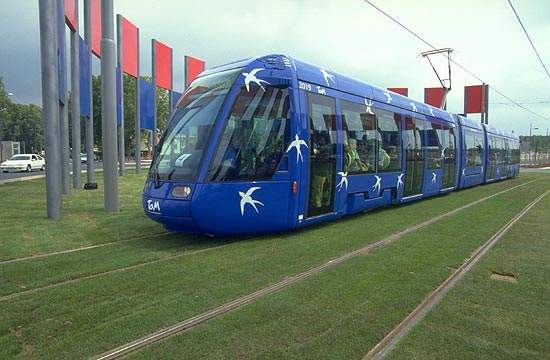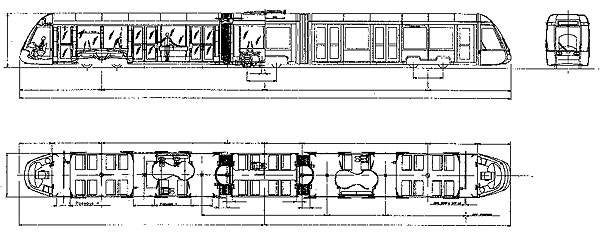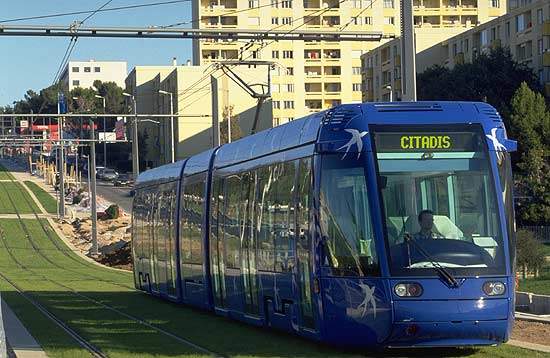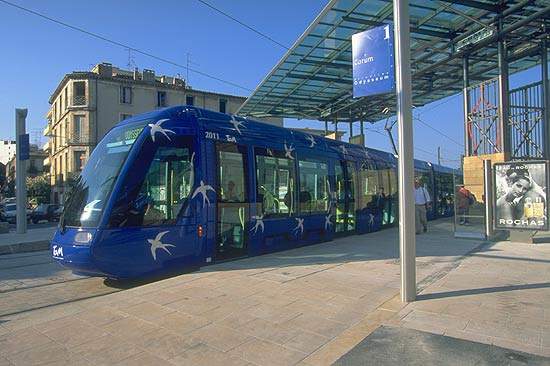One of the fastest-growing cities in France, the south-western conurbation of Montpellier has jumped from the country’s 25th to 8th largest city in the last 25 years. City leaders decided in July 1995 that they needed a long-term solution for the growing transport problems that this expansion was beginning to cause and gave themselves five years to complete the project.
Modern light rail systems have gained much popularity in France, with several under construction and others being expanded. Montpellier is currently working on extension proposals, with a total of 30.5km (19 miles) of new alignments planned in the city.
The project
The choice of a modern tram, or light rail, system was largely determined by the city leaders’ desire for a system with its own dedicated alignments.
Bus lanes, often open to abuse by car drivers, were not seen as a viable solution and as existing bus routes were already at or near capacity a new high-capacity articulated tram system, similar to those which had already proved popular and successful in many other growing central European cities, was seen as the ideal solution.
Public transport accounts for a relatively high 17% of all journeys into and out of the city centre but the tramway’s introduction is seen as a major contributor to the achievement of strict new EU standards on air quality and further extensions to the network in the three years from 2007 are enhancing this position.
The operator is Transports de l’Agglomeration de Montpellier (TAM), a subsidiary of Transdev, a complex French-based conglomeration of 96 individual companies, many of them joint ventures with local authorities in more than 50 cities. In 30 years, it has become a leading world light rail operator.
Infrastructure
The initial route follows a winding course, running broadly east-west from Odysseum to Moisson with 26 intermediate stops along its 15.2km length (two more were added in 2002). The maximum line speed is 70km/h (47mph).
Around 75,000 people live within five minutes’ walk of a tram stop and the route serves such major centres of activity as the main hospital, university, exhibition centre and principal rail terminus.
The tramway is seen as the final piece in the jigsaw of urban regeneration which has already seen the university, hospital and railway station upgraded. As much of the tramway as possible is laid on grassed tracks on reserved alignments separated from existing roads and cycle racks are provided at all stops. The lengthening of trams by a third has required modifications to stops and depot maintenance facilities.
The preferred route for the new 19.5km Line 2, agreed in September 2001 and connecting from Line 1 in the city centre, is from the south-west to the north-east and is fully operational. The cost is €424m, of which a quarter will come from central government.
A further 10km extension to Line 2 is currently being investigated alongside a 500m extension of Line 1. The extension of Line 2 will take it from St-Jean-de-Vedas to Courmonsec. The main extension of the network is the construction of Line 3. Plans have now been completed, and a 20km (12.5-mile) alignment is proposed running between Juvenac and Moisson to connect with Line 1. Construction is due to be completed in 2010, at a total cost of €480m.
Rolling stock
Montpellier was the first city to order Alstom’s sleek, modern Citadis tram design. 28 of the air-conditioned, low-floor trams were ordered but ridership has been so high that new centre cars have been needed, along with two additional three-car sets.
Citadis is a modular light rail vehicle platform which can be adapted to each customer’s needs. A range of interior layouts is offered by Alstom or it can be customised to individual requirements.
In Montpellier’s case, leading contemporary artists Elizabeth Garouste and Mattia Bonetti have been employed to design an elegant corporate livery which the city believes encapsulates its qualities of warmth, conviviality and dynamism. The swallow motif is said to evoke freedom, youth and vitality.
Signalling and communications
The trams operate under multiple-aspect colour light signals and the use of almost entirely reserved trackbed allows a much-simplified signalling system to be used. Where the tram lines do cross roads, however, the signals are phased to give priority to trams at all times.
The trams are fitted with a variant of the automatic train operation (ATO) system which, for instance, allows the length of station stops to be set automatically.
The future
The opening of Line 1, to a great fanfare, is seen as the precursor to an eventual three-line network with north and eastward extensions also planned alongside the original line.
Lansargues, on this projected extension, is the site of a proposed Languedoc-Roussillon TGV (high-speed heavy rail) terminal and will also serve the city’s airport.
Alongside the extensions to Lines 1 and 2, the construction of Line 3 is now becoming a reality, with a completion deadline of 2010 proposed.

